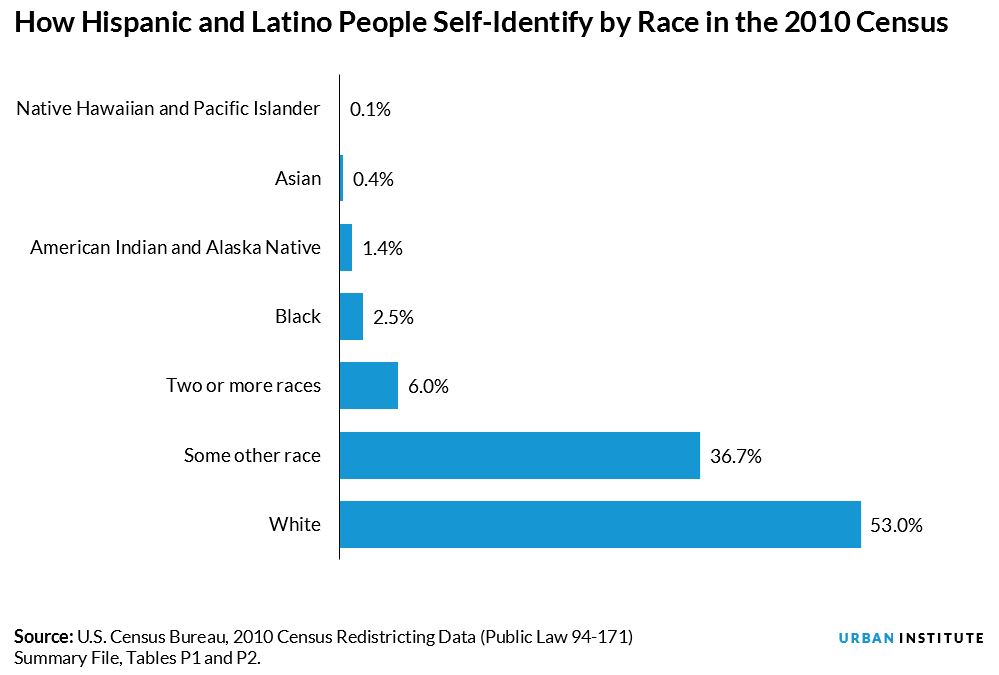
<p>A sample 2010 Census form in Spanish, via rblfmr/Shutterstock.</p>
Whenever we—Jorge (a native Mexican) and Rob (a third generation native Mexican American)—fill out a survey, we face the inevitable paired set of questions asking about our ethnicity and race. We readily fill in “Hispanic/Latino” for the Hispanic ethnicity question, but the subsequent race question always gives us pause. What should we pick? “White”? “Amerindian”? “Mixed”? Or should we choose “Other” and fill in “Mestizo”?
Our struggle is shared, despite having different generational profiles. We are asked to clearly distinguish ourselves through complex concepts such as race, ancestry, geographic origin, and language among options defined by researchers who view life, race, and ethnicity through their own ethnocentric lenses, which are not the same for everyone.
As our Latinx population increases, we must reconsider how we collect survey data not only from Latinxs but also from the many others in our richly diverse US society, including the growing population of people of mixed race and ethnicity. This is especially important for the US Census Bureau and for the Office of Management and Budget (OMB), the federal entity that mandates the racial and ethnic categories used in all federal survey and statistical reporting.
Getting these racial and ethnic categories right is critical because they guide policy and affect communities through federal funding allocations, congressional redistricting, state and local budgets, and data-driven business and research decisions.
Why is detangling race from ethnicity difficult for Latinxs?
The term Hispanic dates back to the 1850s and refers to Spanish cultural heritage, mostly predicated through language. The terms Latino and Latina, popularized in the early 20th century, refer to ancestry in Latin American countries. Unlike Hispanic, the term Latino eschews Spanish ancestry, which could exclude people of Brazilian or Haitian origin. In recent years, the term Latinx has been adopted to embrace a gender-neutral alternative to Latino (we chose to use Latinx in this blog post).
For some Latinxs, Hispanic and Latino implicitly communicate a mix of Caucasian and Amerindian biological ancestry, also known as mestizo. This racial self-identification applies to some, but not all, Latinxs. For instance, Black and indigenous Latinxs may never use the term mestizo. Still, for a big share of Latinxs, there is a linkage between the Hispanic ethnicity and the mestizo race, which may explain why nearly half of Latinx chose not to identify with any of the race categories included in the 2010 Census (by filling in “some other race” or “two or more races”).

The consequences of inadequate questions about racial and ethnic identity
In 2016, the Census Bureau reported to the OMB that a test using a combined race and ethnicity question yielded a substantially increased use of OMB standard categories among Hispanic or Latino respondents, as well as higher rates of respondents identifying as Hispanic alone, instead of other categories, such as White. Based on this evidence, the OMB considered replacing the separate ethnic and race questions with a single combined race-ethnicity question (plus the addition of a “Middle Eastern or North African” category) for the 2020 Census. But in January 2018, the Trump administration announced that it would continue with the same dual question format as in the 2010 Census.
Experts on Latinx polling, like Matt Barreto, claim that ignoring the OMB’s research findings is a way for the administration to evade a more accurate (higher) count of Latinxs, since many would stop checking “White” if given the combined format question (as well as those who would check “Middle Eastern or North African” instead). This issue is another in a long list of factors that could contribute to the misrepresentation of Latinxs in the 2020 Census.
Identity is dynamic and evolving—our data collection instruments should be too
Racial and ethnic categories are social constructs, defined and designed by those who have historically held positions of influence. Our data collection instruments continue to echo this influence, yet the relevance of separate race and ethnic constructs is lagging while society evolves to create new labels and categories that better reflect people’s views and experiences—labels like Latinx, Mestizo/Mestiza, Negro/Negra, and Afro-Latinx.
The policy implications of using inadequate methods to collect data on identity are not trivial. The Census Bureau’s research has revealed that adopting the single race-ethnicity question would improve survey response quality and ensure Latinx people are accurately identified. Furthermore, it illustrates the importance of conducting ongoing research to keep identity categories up to date.
The US is becoming increasingly diverse, a fact illustrated through the self-identities of authors Jorge and Rob—from first and third generations of Mexican immigrants, respectively. Jorge is Mexican; Rob is Chicano. But both of us are Latinx. That’s why we need data collection methods that evolve and adapt to ensure everyone is fairly represented.
Let’s build a future where everyone, everywhere has the opportunity and power to thrive
Urban is more determined than ever to partner with changemakers to unlock opportunities that give people across the country a fair shot at reaching their fullest potential. Invest in Urban to power this type of work.